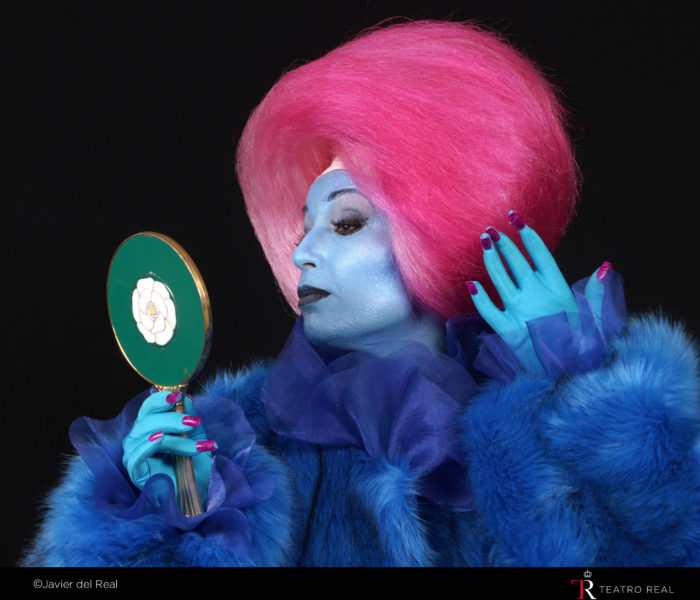Deuxième compositrice vivante à avoir les honneurs de la grande salle du Liceo, la Barcelonaise Raquel García-Tomás, distinguée par le Prix national de la musique en 2020, porte sur la scène lyrique la destinée tragique d’Adélaïde Herculine Barbin (1838-1868) sous le titre d’Alexina B.
Appelée Alexina par ses parents, l’héroïne est un être intersexué qui, pour la première fois dans l’histoire, voit son identité de genre modifiée à l’état civil en France. Avant de se suicider à l’âge de trente ans, il/elle laisse le témoignage écrit de sa courte vie intitulé Mes souvenirs.
L’autobiographie, qui retient l’attention de Michel Foucault, fait l’objet d’une étude de la part du philosophe en 1978 quand le cinéaste René Ferret porte à l’écran, en 1985, le récit de cette vie de combattante sous le titre Le mystère d’Alexina.
L’écrivaine et académicienne française Irène Gayraud puise à la source des écrits pour élaborer le livret de l’opéra (français surtitré en catalan) qui concentre en trois actes et vingt-deux scènes les moments les plus importants de la vie d’Alexina : sa rencontre avec Sara, fille de la directrice du pensionnat où elle est institutrice, et son amour-passion pour elle ; ses démêlés avec la médecine, l’église et la juridiction, toute une société du XIXᵉ siècle hétéronormative qui méconnaît sa vraie mixité et l’oblige à devenir homme (Abel Barbin) afin d’épouser celle qu’elle aime ; sans que le changement validé par la loi la.le libère pour autant : sait-il bien qui il.elle est? « J’ai souffert et j’ai souffert seul, abandonné de tous », écrit-il avant de se donner la mort à trente ans.
C’est ainsi que commence l’opéra, dans une blancheur virginale et une tonalité de ré mineur, celle, très symbolique, des requiem et autre lamento de l’histoire. Des enfants (les voix du chœur), dont un ange veillent le corps inanimé d’Abel Barbin, évoquent à travers leur refrain (Compagnons de la Marjolène) les jours heureux de la jeunesse de l’héroïne. Avec l’arrivée du médecin et du policier, on bascule du blanc au vert, la couleur dominante de tout l’opéra, celle des institutions au XIXᵉ siècle, nous dit la metteure en scène Marta Pazos. Le corps d’Alexina/Abel, hermaphrodite comme on le dit à l’époque, doit faire l’objet d’une autopsie…
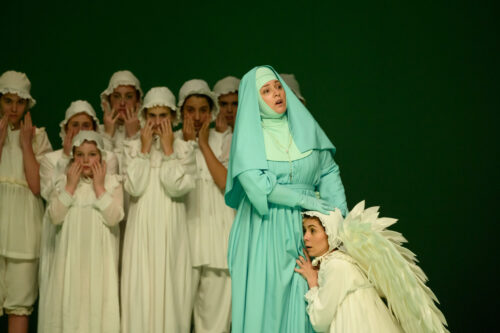
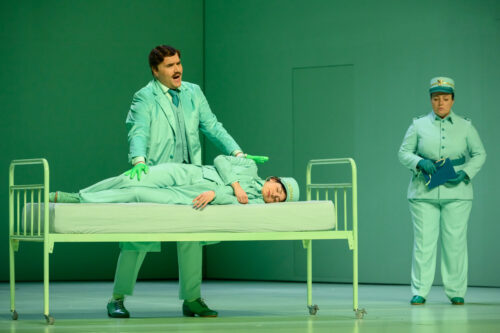
Le flasback, comme au cinéma, débute avec l’arrivée d’Alexina dans l’institut où elle va enseigner et rencontrer Sara. L’espace scénique est modulable, les décors descendent des cintres et les personnages disparaissent dans les trappes, dans un premier acte enchaînant avec fluidité les dix premières scènes de l’opéra. Les nombreux « tombers de rideau » dans les actes suivants morcellent davantage le récit qui s’étire un peu en longueur. Les costumes (ceux de Silvia Delagneau) sont d’époque et les scènes d’extérieur, dans des verts beaucoup plus soutenus, nous rappellent l’importance de la nature au XIXᵉ siècle. Plus intéressante est la direction d’acteur et la chorégraphie de gestes (Maria Cabeza de Vaca) réglant les mouvements des personnages, dont la stylisation n’est pas sans évoquer la manière d’un Bob Wilson. Très réussie, à la fin du premier acte, la scène d’amour entre Sara et Alexina met sur le devant de la scène le lit, descendu des cintres et maintenu à la verticale. Entre volupté et second degré, Marta Pazos y ajoute la participation muette des enfants dans leur propre lit, dont les mouvements contrepointent cette lente montée vers la jouissance, seul moment de plénitude orchestrale rejoignant l’extase wagnérienne.
Le contexte du XIXᵉ siècle et ses couleurs (celles d’un Franz Liszt comme d’un Jules Massenet) sont également très prégnantes dans la partition de Raquel García-Tomás qui louvoie entre tonalité et brouillage des hauteurs, source instrumentale et instances bruitées de l’électronique : une musique de l’entre-deux, interstylistique pourrait-on dire, qui rejoint la thématique du livret et sert de près la dramaturgie : telles ces manifestations orageuses qui reviennent à plusieurs reprises, métaphore, semble-t-il, des déchirements ressentis dans le corps de l’héroïne. Dix-sept instruments seulement sont installés dans la fosse, dirigés de main de maître par le chef espagnol Ernest Martinez-Izquierd.
Dans cet orchestre de chambre privé des cuivres graves, le piano et la harpe sont particulièrement actifs via leurs spirales ascendantes visant les registres aigus des instruments que l’électronique vient parfois relayer. Cette attraction vers la lumière ressentie durant tout l’opéra s’accomplit dans les chants de la moniale Hildegard von Bingen entendus à la fin de chaque acte. Ces moments de grâce passent par la voix des enfants superbement préparés (chœur Vivaldi-Petits chanteurs de Catalunya) et ouvrent les espaces sans limite qu’Abel appelle de ses vœux dans son dernier air.
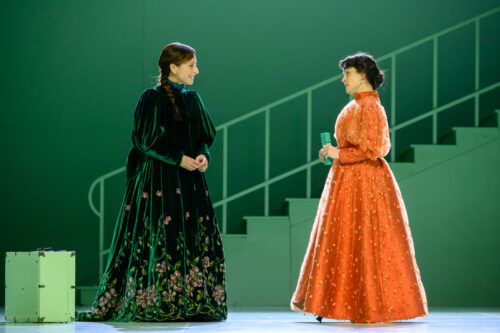
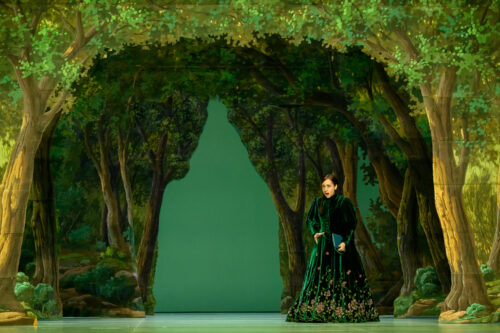

Exceptés les quelques intonations masculines d’Alexina/Abel rappelant son intersexuation, il n’y a pas non plus de tessitures graves parmi les voix mais le choix judicieux et ô combien ambigu du contreténor pour tous les rôles d’homme (Le docteur Goujon, Le docteur H., L’abbé, Monseigneur, le Juge) qu’incarne avec beaucoup d’aisance et de nuances, entre brutalité et bienveillance, Xavier Sabata. Alexina B. reste avant tout un opéra pour la voix où l’orchestre assume le plus souvent une fonction d’accompagnement. La vocalité, elle aussi, balance entre une déclamation proche du texte, dans une prosodie très soignée, et une dimension plus lyrique allant jusqu’à de véritables airs dans les deuxième et troisième actes. Présente sur tous les fronts (Le policier, Madame P., Mère d’Alexina et Sœur Marie des Anges), la soprano Elena Copons est une voix longue, chaleureuse et bien timbrée qui déclenche les applaudissements (comme au XIXᵉ siècle!) après cet air de bravoure où elle exprime à sa fille son amour indéfectible. Soprano léger et plein de fraicheur, Mar Esteve accumule les petits rôles, celui d’Alexina enfant, de Léa, d’un enfant du couvent et d’une étudiante de l’internat. On est également séduit par le soprano sensible et flexible de l’Espagnole Alicia Amo endossant le personnage de Sara. Quant au rôle-titre, confié à la mezzo française Lidia Vinyes-Curtis, il est écrasiant, exigeant en raison de ses écarts de tessiture et superbement défendu par la chanteuse dont l’aplomb scénique le dispute à l’aisance vocale. Son ultime monologue, entrecoupé de silence, lorsqu’elle fait ses adieux à Sara et à sa mère, laisse entrevoir une véritable dimension de tragédienne.

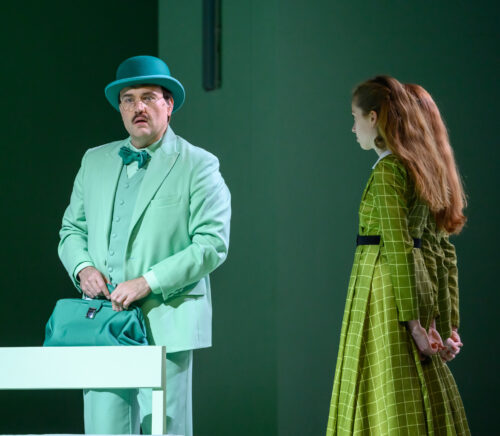
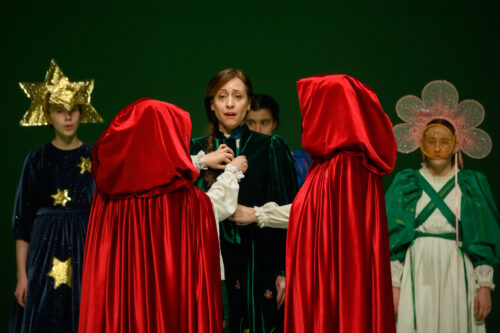
Michèle Tosi
Raquel García-Tomás (née en 1984) : Alexina B., opéra en trois actes et 22 scènes, sur un livret d’Irène Gayraud d’après le témoignage d’Adélaïde Herculine Barbin ; mise en scène Marta Pazos ; scénographie Max Glaenzel ; costumes, Silvia Delagneau ; chorégraphie, Maria Cabeza de Vaca ; lumières, Nuno Meira ; Vidéo, Raquel García-Tomás. Lidia Vinyes-Curtis, mezzo-soprano, Alexina Barbin / Abel Barbin ; Alicia Amo, soprano, Sara ; Elena Copons, soprano, Le policier, Madame P., Mère d’Alexina, Sœur Marie des anges ; Mar Esteve, Alexina enfant, Léa, enfant du couvent, étudiante de l’internat ; Xavier Sabata, contreténor, Docteur Goujon, Le Docteur, Docteur H., L’abbé, Monseigneur, Le Juge ; Chœur Vivaldi-IPSI-Petits chanteurs de Catalunya, élèves du couvent, élèves de l’internat ; Orchestre symphonique du Liceo ; direction Ernest Martinez-Izquierdo.
Photos © Toni Bofill



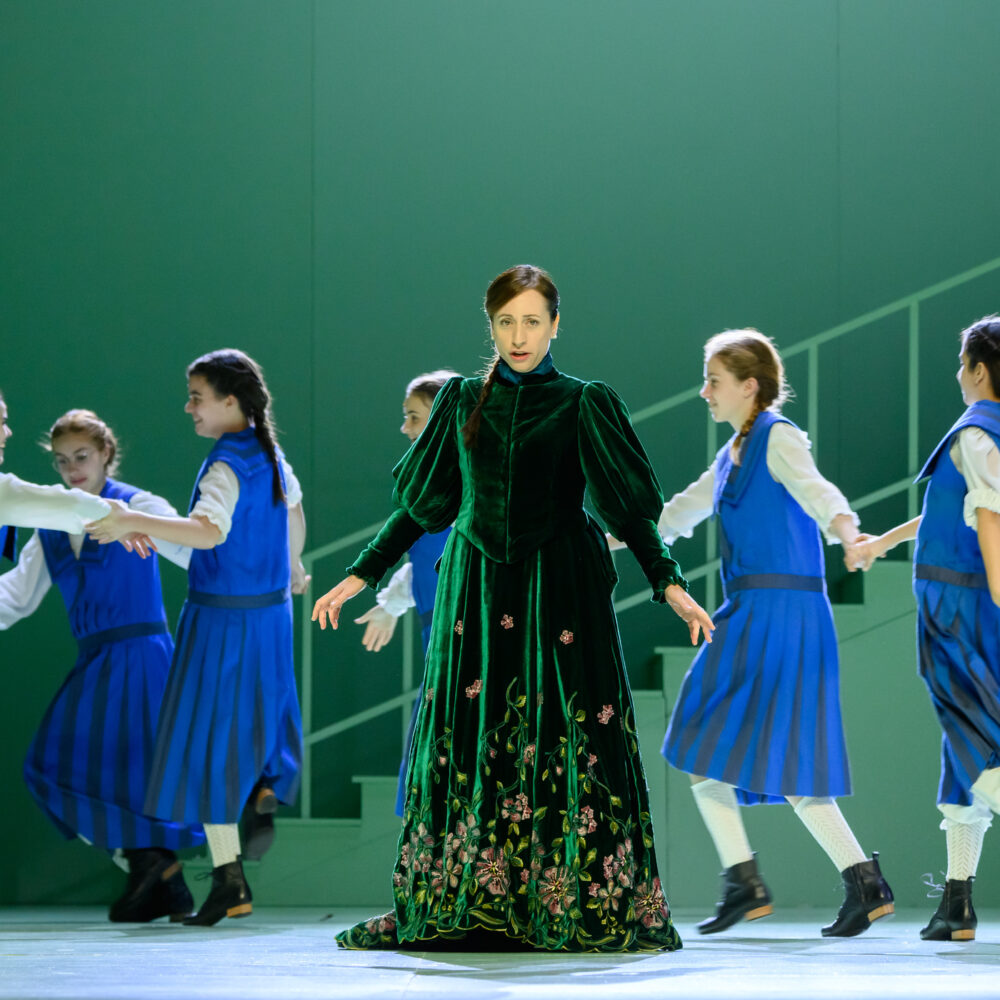)

